Kutsinta (cuchinta) are Filipino steamed cakes made with flour, tapioca flour, and brown sugar. Soft, chewy, and topped with grated coconut, they're a delicious breakfast, snack, or dessert.
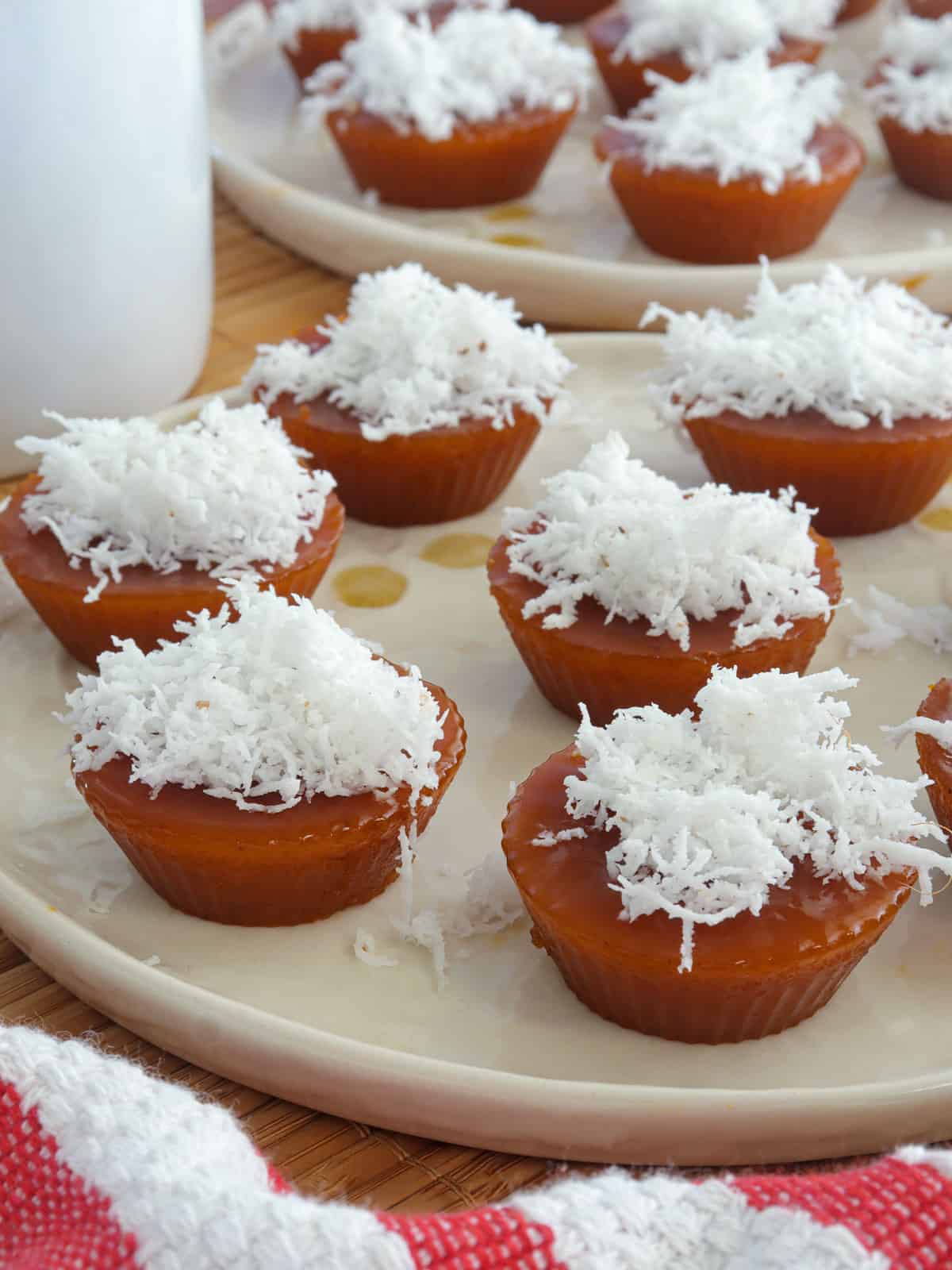
I've been looking for a good recipe for kutsinta or cuchinta since forever, but my search and kitchen experiments have been sorely disappointing. That was until last weekend, when my kumare posted on Facebook a picture of the kutsinta she made and how she finally nailed the recipe after two years of trial and error.
I was so excited reading her post that I PM'ed her as fast as my stubby fingers could type! I am unsure of the time difference between California and Vancouver, where she lives, but I was glad she replied with the recipe and had me on my kutsinta-making project in thirty minutes flat. Thank heavens for awesome friends 🙂
I made a couple of bites of the steamed cakes following her method, and I had to agree; she indeed nailed it! While most of the recipes I've encountered in the past use rice flour, her version uses all-purpose flour and tapioca flour, which, along with the addition of lye water, produces the soft and chewy texture I like.
Are you in the mood for more puto recipes? Try this easy Puto with tons of cheese and this Puto Lanson made of grated cassava. Enjoy!
Ingredient notes
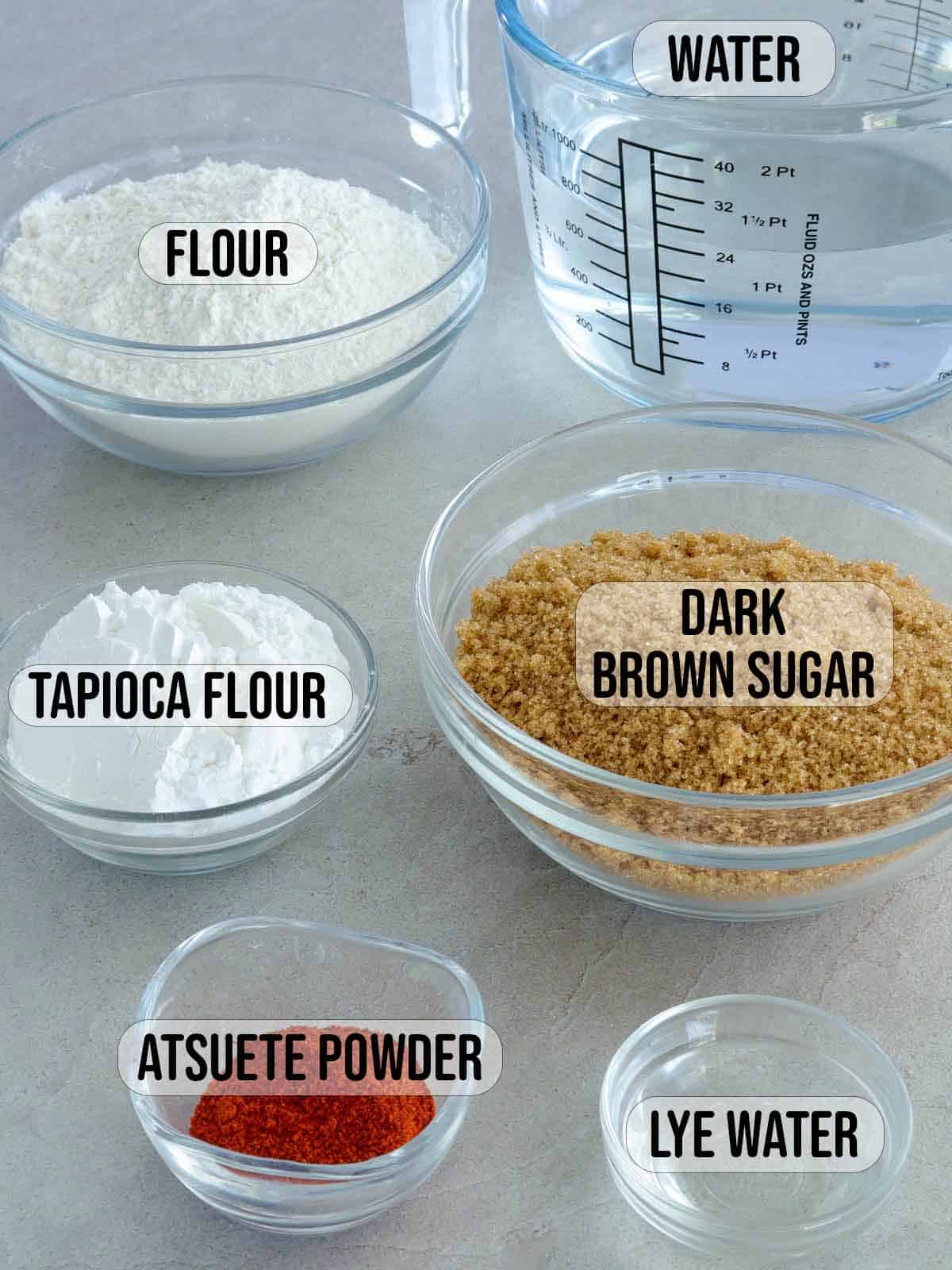
- Flour- the recipe uses a mixture of all-purpose and tapioca flour for a soft and chewy texture.
- Brown sugar- adds color and sweetness
- Water- the ratio of flour and liquid in the recipe yields the texture I like. Less water will result in a tougher cuchinta, and more water will create a softer consistency.
- Atsuete/annatto powder- enhances color. You can use more or less depending on the depth of color desired and the brown sugar used. Note that the color will deepen as the mixture cooks.
- Food-grade Lye water- locally known as lihiya. It softens the texture for a chewy texture and boosts color. Add sparingly as it can impart a bitter taste.
Kutsinta cooking process
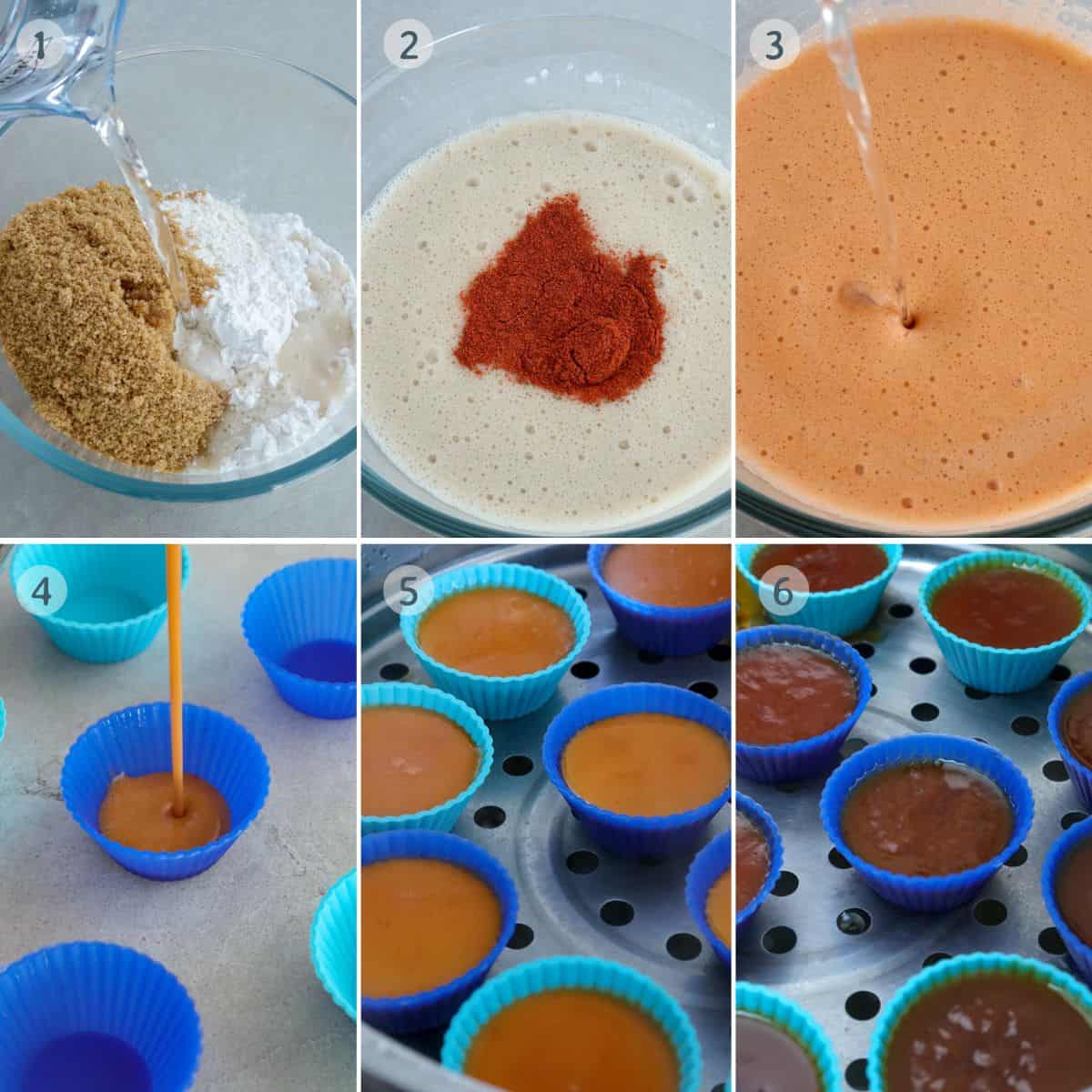
- Combine flour, tapioca flour, sugar, and water in a large bowl and stir well until dissolved and the mixture is smooth.
- Add atsuete and stir until well dispersed and the desired color is achieved.
- Add lye water and stir.
- Fill the silicone molds to about ¾ full. If using tin molds, lightly grease the insides with melted butter to make removing the steamed kutsinta easy.
- Fill the steamer with water and bring to a simmer. Arrange the filled molds in a single layer on the steamer basket and steam the kutsinta mixture until set.
- Remove from heat and allow to cool. Gently remove the steamed cakes from the molds and top with grated coconut.
Helpful tips
- Steam in a gentle simmer to prevent the kutsinta from sinking in the middle.
- These are mini-sized cuchinta; recipe yield depends on the size of molds you use.
- Stir the mixture before pouring it into the molds, as the flour tends to settle in the bottom.
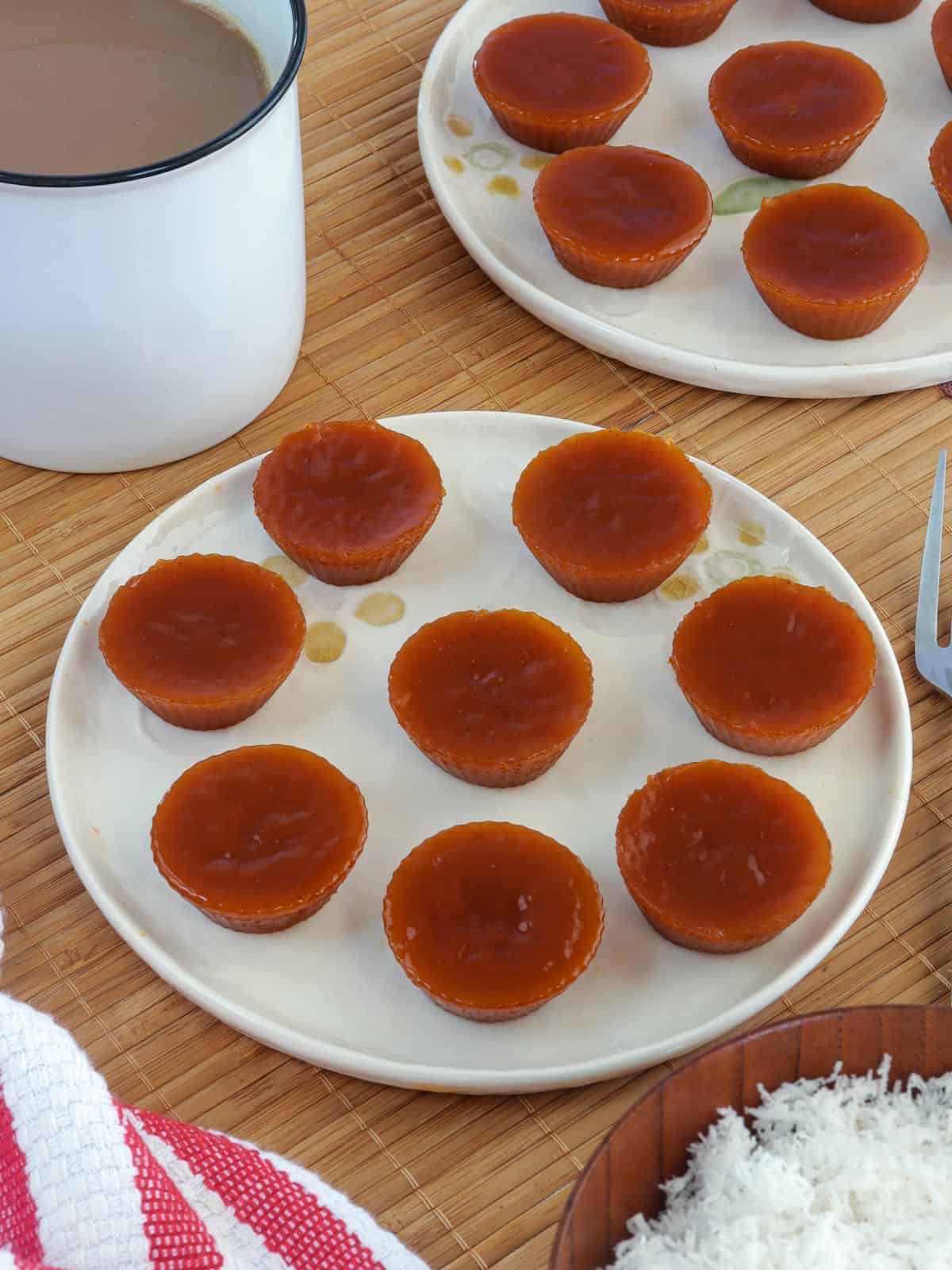
Flavor Variations
- Ube- use white sugar instead of brown sugar, skip the atsuete powder, and add a few drops of ube extract to the batter
- Black- use white sugar instead of brown sugar, skip the atsuete powder, and add a few drops of black food coloring to the batter
- Pandan- use white sugar instead of brown sugar, skip the atsuete powder, and add a few drops of pandan extract to the batter
Frequently Asked Questions
What lye water does in kutsinta?
Food-grade Lye water is a strong alkaline solution used in various cooking processes, such as curing and baking. It is a key ingredient in making kutsinta or pichi-pichi, as well as Chinese moon cakes, bagels, pretzels, and ramen noodles. It raises the pH level of the dough for a richer color and a springy texture.
If you prefer not to use lye or don't have access to it, you can read this article on using baked baking soda solution as an alternative.
How to serve and store
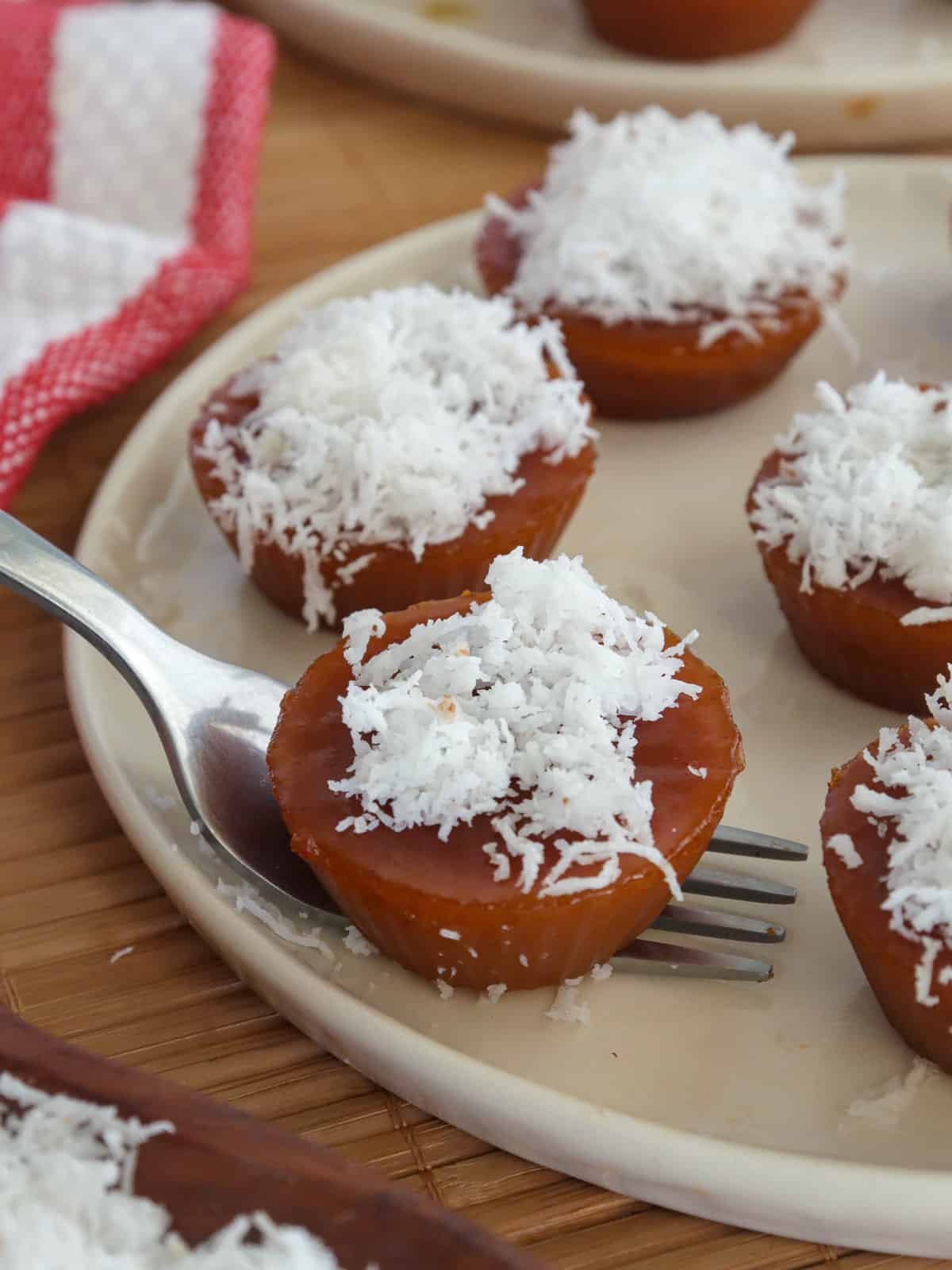
- Kutsinta are traditionally served for breakfast, midday snacks, or after-meal desserts. For a tasty treat, enjoy them with hot tsokolate or ice-cold calamansi juice!
- Top the steamed cakes with grated coconut (niyog) or toasted desiccated coconut (budbod). You can skip the coconut and dip them in dulce de leche or yema spread.
- To store, transfer to a container with a tight-fitting lid and refrigerate for up to 3 days. For longer life, top with coconut when ready to serve
More snack recipes
Ingredients
- 1 ½ cups flour
- ½ cup tapioca flour
- 1 ½ cups dark brown sugar
- 3 cups water
- 1 tablespoon atsuete powder
- 1 tablespoon lye water
Equipment
- silicone molds
- Steamer
Instructions
- In a bowl, combine flour, tapioca flour, sugar, and water. Stir well until dissolved and mixture is smooth.
- Add atsuete and stir until well dispersed and the desired color is achieved.
- Add lye water and stir.
- Fill molds to about ¾ full.
- Add water to the steamer and bring to simmer over medium heat.
- Steam kutsinta for about 40 to 45 minutes or until mixture is set. Remove from heat and allow to cool.
- Gently remove from molds and top with grated coconut.
Notes
- The atsuete is primarily added to deepen the color and you can use more or less depending on the brown sugar you use.
- If using tin molds, you might need to grease the insides to make removing the steamed cakes easy.
- Steam in a gentle simmer to prevent the kutsinta from sinking in the middle.
- These are mini-sized cuchinta; recipe yield depends on the size of molds you use.
- Stir the mixture between pouring into the molds as the flour settles in the bottom.
- Nutritional info is calculated at two pieces per serving.
Video

Nutrition Information
“This website provides approximate nutrition information for convenience and as a courtesy only. Nutrition data is gathered primarily from the USDA Food Composition Database, whenever available, or otherwise other online calculators.”

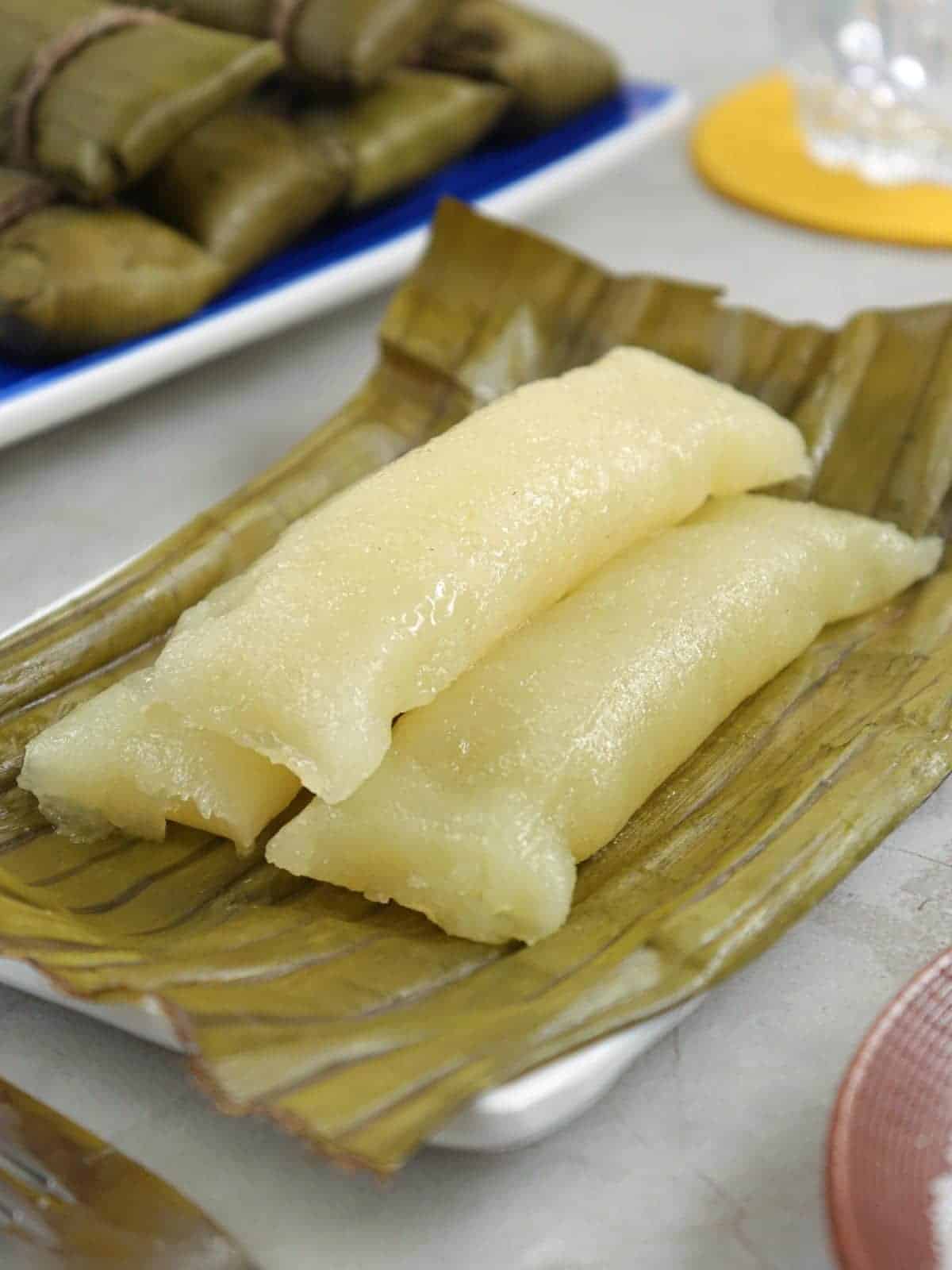
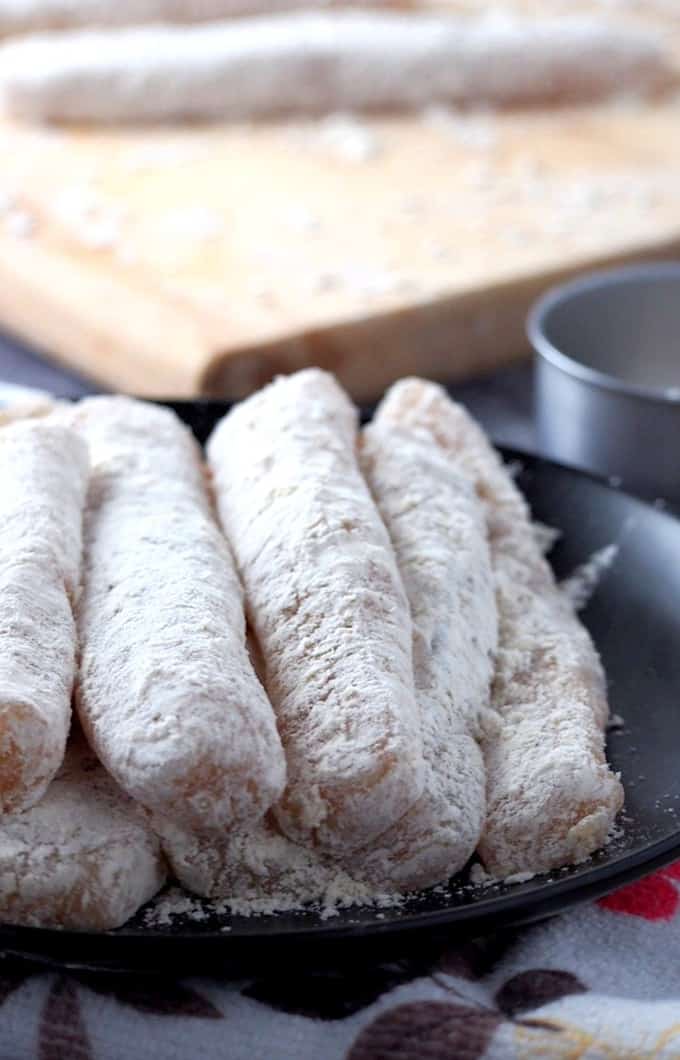
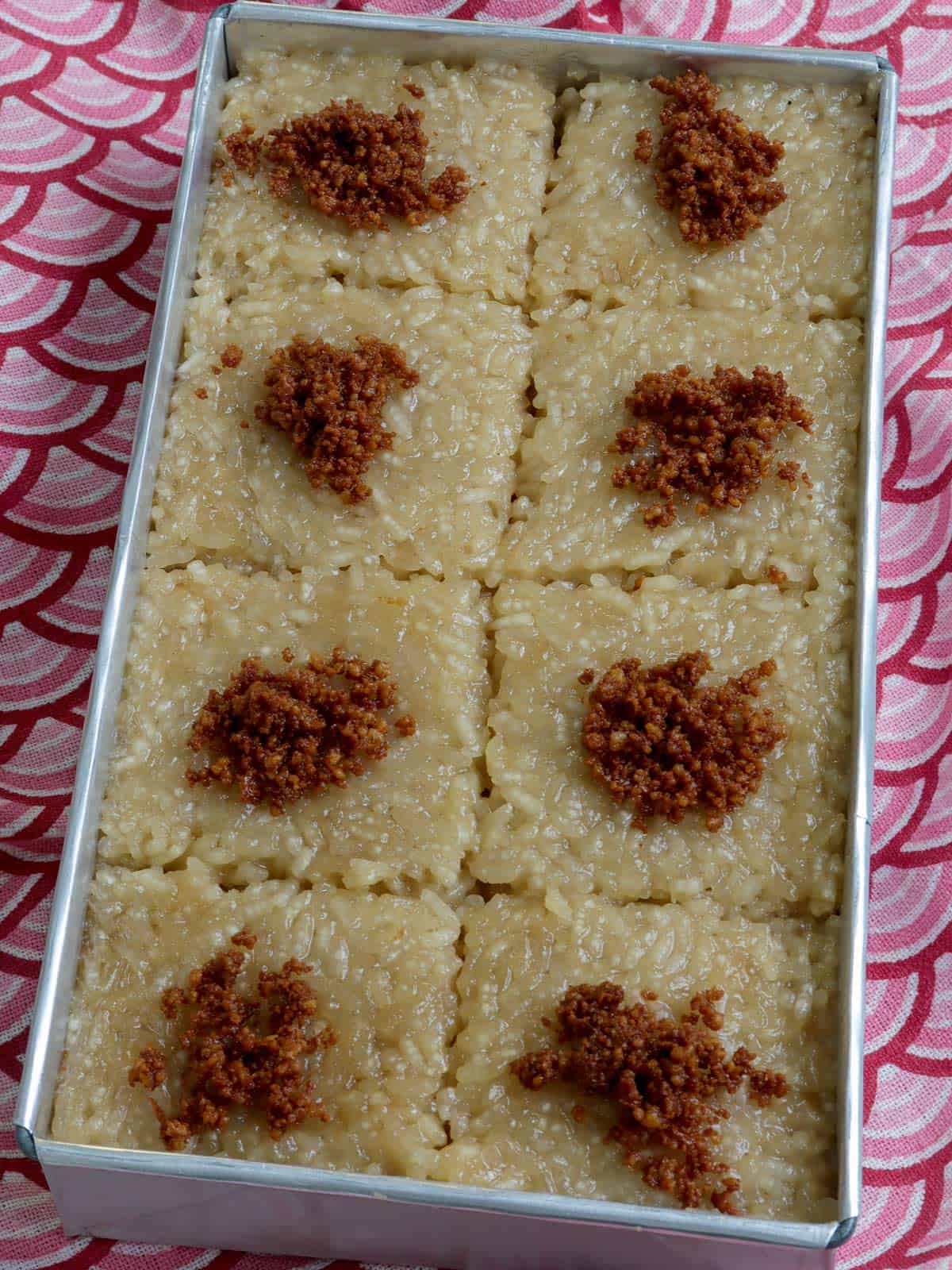
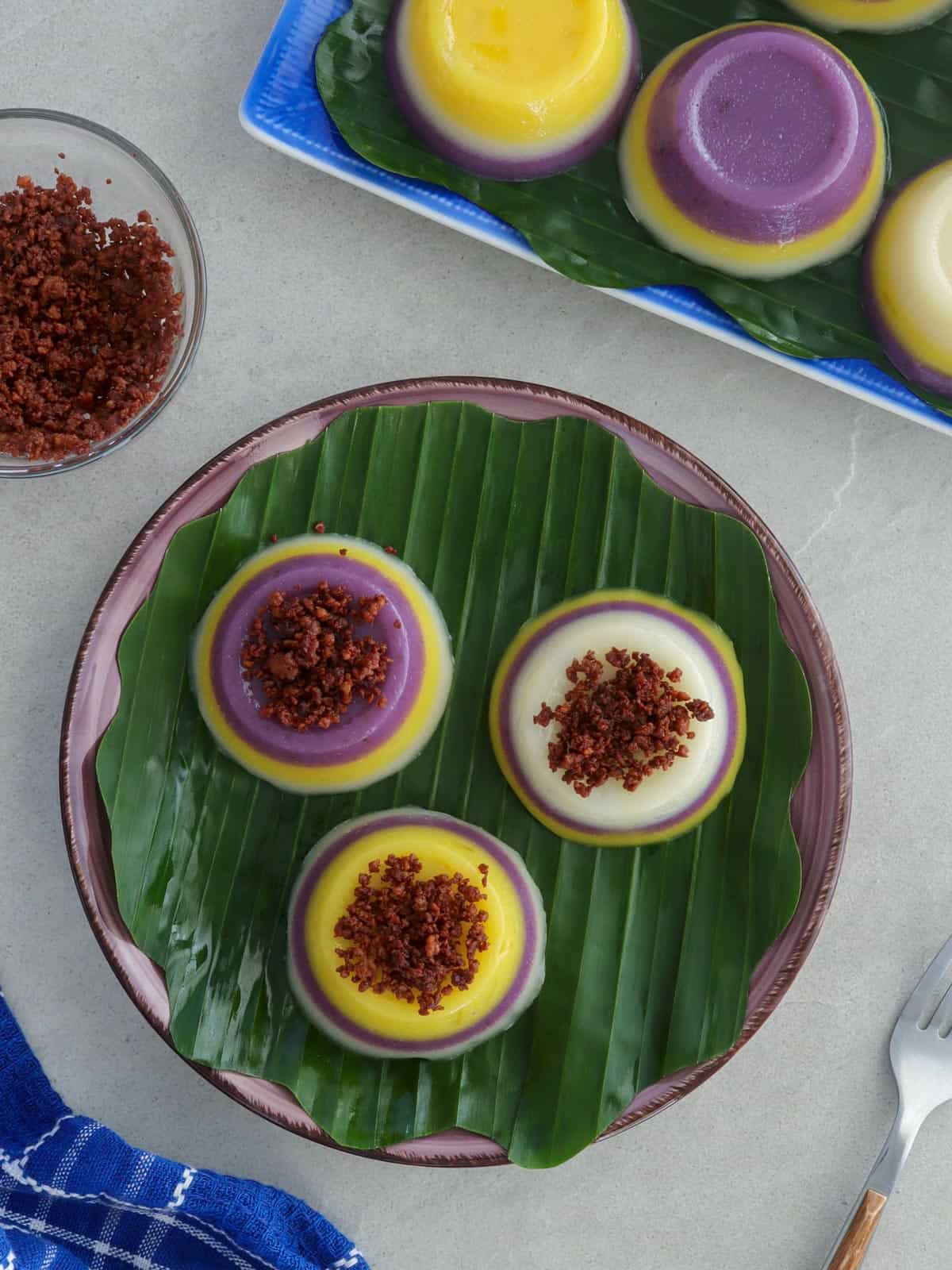
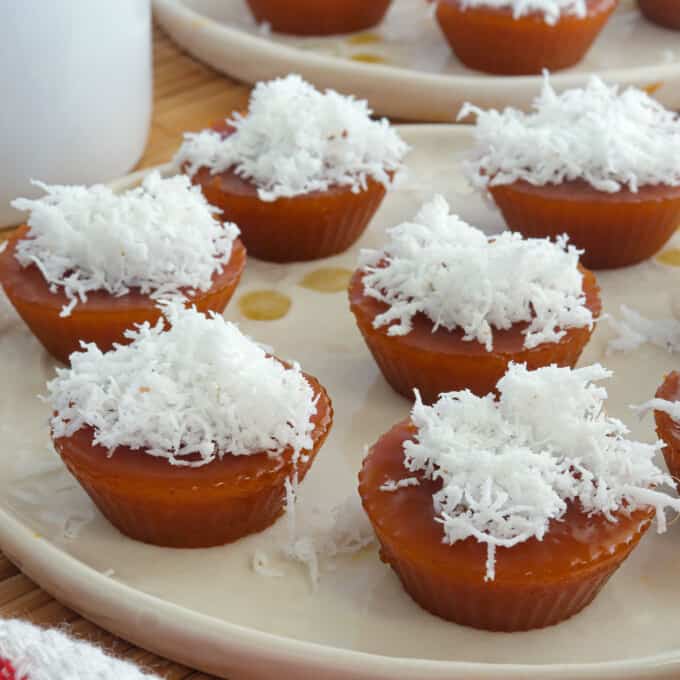
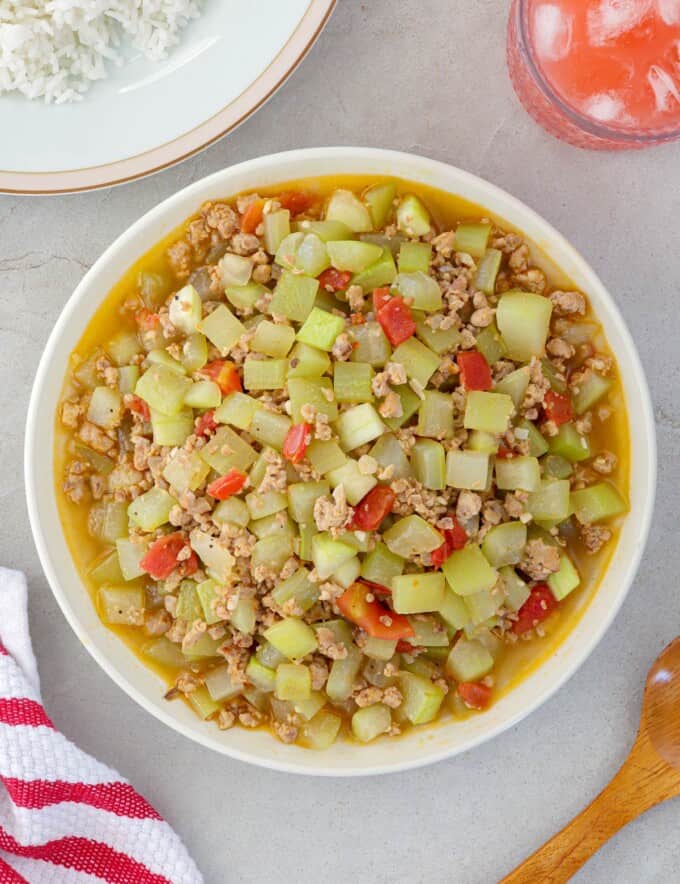
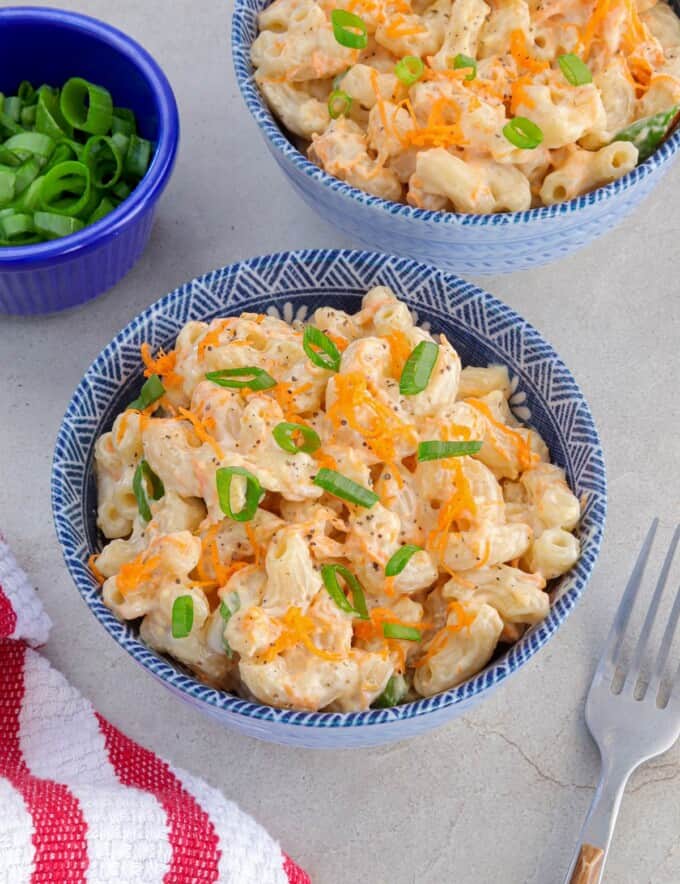
Marvi says
Where can I find the atsuete powder... I've look on Amazon but I didn't see. Thank you
Tserilin says
I used coconut sugar to lessen the guilt a bit. 😊 Loved it! Thanks for sharing the recipe.
Mirasol Velasquez says
I will do this for sure.My children likes kutsinta.Thank you.
jerson p caburong says
we will try this mam, thnks
Owie says
The best Kutsinta! As an OFW who normally craves for Pinoy food, your website is quite helpful if not a lifesaver. So thankful to you and your kumare for this yummy recipe.
Lalaine Manalo says
Yes, thank you to my kumare for coming up with the recipe and sharing it with me 🙂
Heddy says
My Kutsinta wet sa middle i already steamed for an hr
January says
Why my kutsinta is watery on the top even though it is already cook? Thank you in advance for answering my questions maam.
Rosalie says
I can’t find tapioca flour can i use tapioca starch? What i can substitute to tapioca flour?
Ma.Josie C De la Cruz says
Very very nice very good
Angel k camarotte says
Thanks for the your delicious recipes.
Do you have the recipe for kapangpangan tamales Or BATANGAS tamales?
How about pinoy bbq or inihaw.
Thanks/ Angel
Angela says
Is it possible to make this gluten free? Have you tried it with gluten free flour? Or can the all purpose flour be substituted with rice flour?
Joy says
How many days po pwede isstore sa ref ang kutsinta?thanks
Lalaine Manalo says
Mga 3 days po. Store without the coconut para mas tumagal.
Annabel Roy Robinson says
What size of the molder should I use for the kutsinta? By the way, I love all the recipes in your blog and currently working on the Christmas Fruit Cake.
Thank you and hope to hear from you soon.
ESPERANZA RAGASA says
can i use atsuete extract to puto kutsinta instead of atsuete powder?
Jane Cawaling says
Will it not taste bitter or have a strong flavor with 1 tbsp.of.lye water?
Niña V Pangga says
Salamat po sa recipe.. more power po
Elaine Rivera says
Hello Lalaine. I’m tremendously impressed with all your simple delicious and easy instructions to follow. All your ingredients too are all easy find in our Asian stores here. My two daughters are learning how to cook Fil food with your elegant recipes. I feel like home in my palette. Congratulations and my blessings to you.